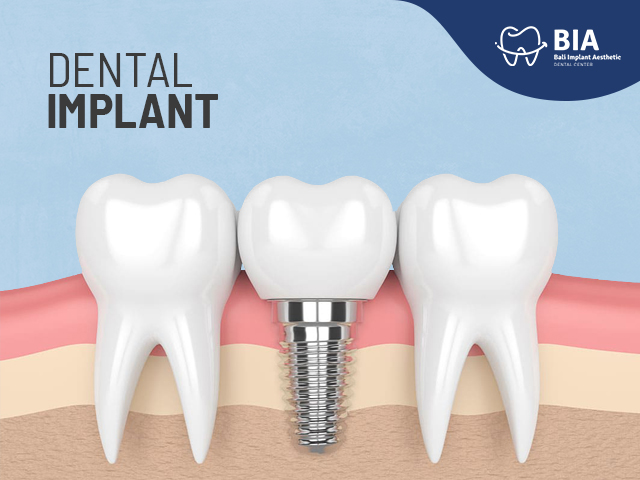Primary Teeth: Age-Related Differences in Risk
Article | 2020-02-10 17:18:06
Home » Articles » Primary Teeth: Age-Related Differences in Risk
Human teeth both milk teeth and adult teeth gradually grow along with changes in diet. This is where the changes in risk that are very important to be considered in order to be able to anticipate any possibility of disease or damage to the teeth and mouth. Moreover, it is proven that as we get older, the incidence of caries will increase. The most recently grown teeth are more susceptible to caries because of the difficulty of cleaning the teeth.
Factors that cause caries in children are behaviour, environment and dental health services. One factor that is directly related to the process of caries is dental and oral hygiene.
Dental caries is a process of damage that occurs due to interactions between factors in the mouth. Factors that play a role include dental factors, saliva (tooth composition, tooth position, saliva acidity and thickness), bacteria, carbohydrates (glucose and glucose) and time factors.
At the baby's developmental stage, baby teeth begin to grow around the age of 5 months. At this time solid food can begin to be given. At the age of 6-8 months, babies have begun to masticate. By the time the baby is 18 months to 6 years old, twenty primary teeth have fully grown.
Babies who are breastfed all night have a greater risk of caries. The attachment of the mother's nipples throughout the night in the baby's mouth will cause breast milk to contact with teeth longer. Especially when sleeping, saliva flow and swallowing activity will be reduced which causes the bacteria to ferment the milk to produce acid. This acid will make a child's teeth porous.
Inappropriate breastfeeding can also lead to caries in children. If the mother gives breast milk in a sleeping position, the mother often goes to sleep so that the mother cannot control breastfeeding for her child. This sleeping breastfeeding position causes inundation of breast milk when the child is asleep with the mother's nipples still in the child's oral cavity.
Giving drinks through pacifiers also has its own risks. Especially if the pacifier contains formula milk containing sucrose or sugar sweetener. Sugar is the main cause of caries.
At the age of 2 years, children begin to learn to brush their teeth from parents. This is a crucial moment whether children are able to imitate the good habits of parents or not. The number of bacteria also influences the formation of dental caries. At the age of 2-3 years, the risk of caries will be higher in the milk teeth.
At the age of 2, parents need to have their children's teeth examined more regularly, not just when there are complaints. Children should be taken to the dentist routinely, every 6 months to find out the development and growth of the teeth and take care of them if needed.
At the age of 6 years, baby teeth begin to date gradually and gradually also replaced permanent teeth. In the age range of 6-12 years, baby teeth begin to be replaced with permanent teeth. Food choices will be different at this age. Health problems which are the main focus at this age are caries and tooth irregularity.
At the age of 12-18 years, all permanent teeth have grown completely. As the child matures in maintaining dental hygiene, more detailed insights into dental health must be instilled to avoid problems in the future.
Source:
Angela A. Pencegahan primer pada anak yang berisiko karies tinggi. Maj Ked Gigi Universitas Sumatera Utara. 2005; 38(3): 130–4.
Alhamda S. Status kebersihan gigi dan mulut dengan status karies gigi (kajian pada murid kelompok umur 12 tahun di sekolah dasar negeri kota bukittinggi). Berita Kedokteran Masyarakat. 2011; 27(2): 108–15.
Rahayu TU. Pengaruh edukasi menggunakan Kartu Indikator Karies Anak (KIKA) terhadap perilaku ibu tentang pencegahan karies gigi sulung di Kelurahan Randusari Semarang. Jurnal Media Medika Muda KTI Semarang: Fakultas Kedokteran Universitas Diponegoro. 2013; 2(1):1-9.
Isro’in L, Andarmoyo S. Personal Hygiene: konsep, proses, dan aplikasi praktik keperawatan. Jakarta: Graha Ilmu; 2012.
Noviani N. Faktor-faktor yang berhubungan dengan status karies gigi (DMFT) Santri Pesantren Al Ashriyyah Nurul Iman Parung Bogor tahun 2010. [Thesis]. Jakarta: Universitas Indonesia; 2010.
Muttaqin A, Sari K. Gangguan Gastrointestinal: Aplikasi Asuhan Keperawatan Medikal Bedah. Jakarta: Salemba Medika; 2011.
Pintauli S, Hamda T. Menuju gigi dan mulut sehat: pencegahan dan pemeliharaanya. Edisi ke-1. Medan: USU Press; 2008.
Malau KSA. Nursing Caries pada Anak 2-5 tahun di BKIA Kecamatan Medan Denai tahun 2010 [Skripsi]. Medan: Universitas Sumatera Utara; 2010.
Halim MP. Peran orang tua terhadap pemeliharaan kesehatan gigi dan mulut anak dan status kesehatan gigi dan mulut anak kelas II SD St Yoseph 1 Medan. Medan: Universitas Sumatera Utara; 2012.
Effendy N. Dasar-dasar Keperawatan Kesehatan Masyarakat. Edisi ke-2. Jakarta: EGC; 1998.
Winarsih BD. Hubungan peran serta orang tua dengan dampak hospitalisasi pada anak usia prasekolah di RSUD RA Kartini Jepara [Thesis]. Jakarta: Universitas Indonesia; 2012




